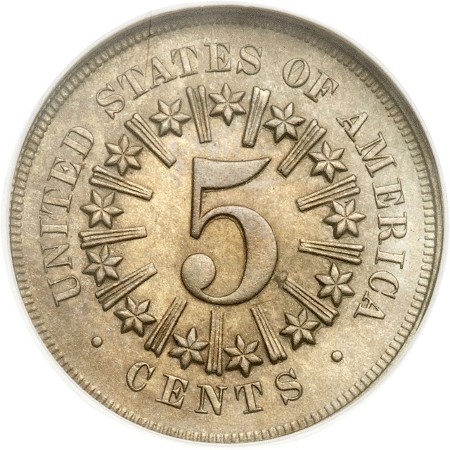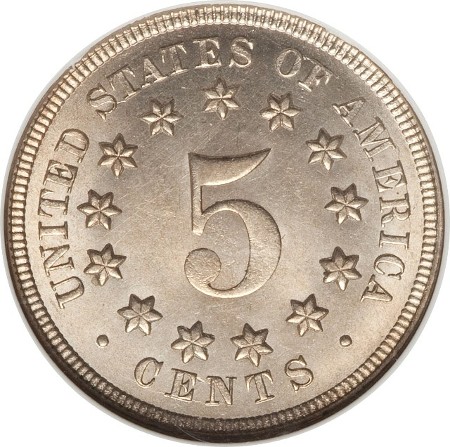PART I. Die Subtypes:
Mid-year Design Modifications:
1867 Shield Nickel; with and without Rays
Definition: The production of the silver half dime began to decrease in 1863, with mintages of less than 1,000,000 (except for years 1871 and 1872). To replace this denomination, the Act of May 16th, 1866 established that a new denomination, the nickel, be produced with a face value of five cents. The composition of this new denomination was 75% copper and 25% nickel, the same as the circulating three cent pieces of that time.
The new nickel was difficult to manufacture due to the hardness of the planchets used. The coins struck consistently fell short of the high quality the mint expected, and the working dies had a life expectancy far less than predicted.
Longacre’s design of the obverse and the reverse face of this new Shield nickel had been heavily criticized. The obverse had been fashioned after the obverse of the two cent piece and was likened to a “tombstone” with “weeping willow branches”. The reverse design, with its “stars and bars” motif was reminiscent of the design used by the Confederate States during the Civil War and brought even more objections.
These objections, particularly those directed at the reverse design, prompted the Mint to make changes. Early in the second year of production (1867), the reverse of the Shield nickel was re-designed so that the three bars between adjacent stars were removed.


The above images show the 1867 Shield nickel with rays between the stars (image to the left) and another 1867 nickel without the rays between the stars (image to the right).
Images are courtesy of Heritage Auctions.